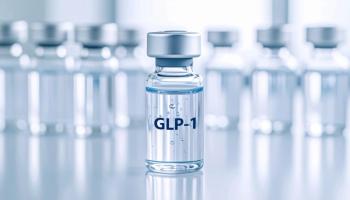
Long-Acting Raltegravir Prevents Vaginal HIV Transmission
Raltegravir may help boost adherence and help prevent vaginal HIV transmission.
Pre-clinical study results appear to demonstrate the efficacy of a new long-acting formulation of the HIV medication raltegravir in preventing vaginal transmission of HIV in animal models.
The study—from researchers in the division of infectious diseases at the University of North Carolina (UNC) School of Medicine and collaborators from Merck—was published online on March 21, 2016 in the Journal of Antimicrobial Chemotherapy.
Across the globe, vaginal transmission accounts for the majority of new HIV infections. Whereas pre-exposure prophylaxis (PrEP) in the form of vaginal gels and vaginal rings have been shown to reduce HIV transmission in people at high risk of infection, problems with adherence have led to poor efficacy in preventing HIV transmission.
The current study was conducted with the hopes that long-acting raltegravir may help address these obstacles to adherence and help prevent vaginal HIV transmission. The agent is among long-acting injectable antiretrovirals that provide sustained systemic drug exposures over many weeks and require infrequent parenteral administration.
“Raltegravir is a well-tolerated drug with a strong track record of use for the treatment of HIV,” said lead author Martina Kovarova, PhD, assistant professor of medicine in the division of infectious diseases at UNC. “Changing its form from an oral pill to a subcutaneous injection produced a long-acting release of the drug that can be used for pre-exposure prophylaxis.”
For the study, long-acting raltegravir was administered subcutaneously to mice and rhesus macaques. Kovarova and colleagues then analyzed raltegravir concentrations in peripheral blood and tissue, assessed suppression of HIV replication, and evaluated protection from HIV transmission.
The study team found that 2 weeks after a single subcutaneous injection of long-acting raltegravir, the plasma concentration of raltegravir in the animals models was comparable to 400 mg orally, twice daily in humans who use the medication for PrEP.
When the single injection of long-acting raltegravir was also found to result in a strong suppression of viral load in both plasma and cervicovaginal lavages, the researchers used a validated model of vaginal HIV transmission to evaluate the long-acting formulation’s effectiveness over 4 weeks.
Long-acting raltegravir was found to provide significant protection during that period against multiple relevant strains of HIV that were introduced to the model as a series of high-dose challenges.
“A single injection of long-acting raltegravir may only be needed every month or every few months to provide protection against HIV infection, which could improve adherence,” said Kovarova. “Effective long-acting formulations for HIV prevention represent the next generation of pre-exposure prophylaxis,” said study co-author Victor Garcia, PhD, professor of medicine in the division of infectious diseases at UNC. “This is a very exciting new formulation of raltegravir with great potential.”
Newsletter
Stay informed on drug updates, treatment guidelines, and pharmacy practice trends—subscribe to Pharmacy Times for weekly clinical insights.

















































































































































































































